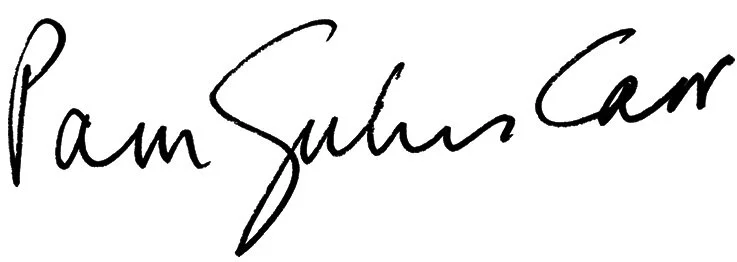About
Pam Carr’s story emerges from her lived reality in a marginal Zambian wilderness area, where conflicting and contradictory realities coexist. Having lived her life alongside elephants, big-cat predators, and macho safari culture, Pam subverts the romantic western colonial trope of wilderness as isolation. Her art reflects a struggle to articulate elusive truths about our relationship to the natural world and our human impulse to connect beyond categories and divisions.
Growing up in the Luangwa Valley, Pam has been profoundly influenced by the rural subsistence Kunda way of life. She studied art history and fine art at the University of Witwatersrand in South Africa, and practices as a painter and sculptor, weaving together western and Kunda artistic traditions.
After her studies Pam returned to the Luangwa to raise a family. Seeking antidotes to the runaway consumer culture that tries to commodify the wilderness she grew up in, her work has taken her to deep explorations of ancient rock art and women’s coming of age ceremonies in Kunda matrilineal culture. After her daughters were invited to be included in the chisungu rituals, she spent years attending, learning and absorbing these ceremonial teachings, and her work arises from these experiences.
The rituals are also reflected in the images from rock paintings at Kalemba in Eastern Province, Zambia. These images have been handed down, re-enacted and reinterpreted by women in Kunda matriarchal and matrilineal society over generations. Pam's work references the rock paintings in a way that combines traditional and fine art while protecting the images' secret meanings. Respecting the guidelines about what is permitted to be recorded or revealed, she finds common ground between African and western feminism in the traditions and stories of girls' coming-of-age across both cultures.
Rites of passage rituals break down comfortable barriers and convenient rules. Boundaries shift between young and old, physical and spiritual, darkness and light, life and death, and even human and animal. Echoing northern European folk tales like Little Red Riding Hood, Pam weaves into her art the leopards, lions, hyenas and wilderness that feature in Kunda stories and her own daily life.
Process/Method
Far from taking tropes of African culture and reproducing them in a superficial way, Pam seeks to become subjectively immersed in the language of pictograms which form a link between rock art in eastern Zambia and women’s initiation images, ciphers, signs and symbols at the core of Kunda thought.
Her process—a ritual in itself—starts by drawing an image over and over, first with a tutored hand and then with eyes closed until she has absorbed it in her cell memory, like learning and internalising a piece of music through repetition. These gestural images are then enlarged in oil and tar or watercolour onto a board using a series of grids, a practice borrowed from western technical drawing.
She absorbed concepts and images, repeating them again and again almost in mantra mode creating a lexicon. By learning these images through repetition she aims not to reproduce or to document them but to approach an embodied understanding. Through the process of repetition she learns, and this becomes part of her in the same way as one would internalise a piece of music, in a mode of reworking these images with closed eyes, in a meditative state, in a manner described by Berggruen, where the inner and outer world, the observer and the thing are merged.
This process suspends the artist in the space between spontaneous and controlled, until she's able to create something new and valuable that can be read across cultural boundaries.
Using Indian ink and a large brush these images are drawn repeatedly with a tutored hand and then later with eyes closed, until the figure becomes a cipher. Closing the eyes releases the unconscious gesture or the underlying emotive aspects of the form. The replication of painting and repainting simplifies the sign in a Zen-like way until it is personalised. There is an intensity of labour necessary to capture this apparent spontaneity. There is here an attempt to grasp on a level of feeling rather than visual superficiality. These gestural images resembling a type of calligraphy are then enlarged onto a board in a manner related to western technical drawing, by a series of grids. The resulting drawings are completed in tar with a large brush.

